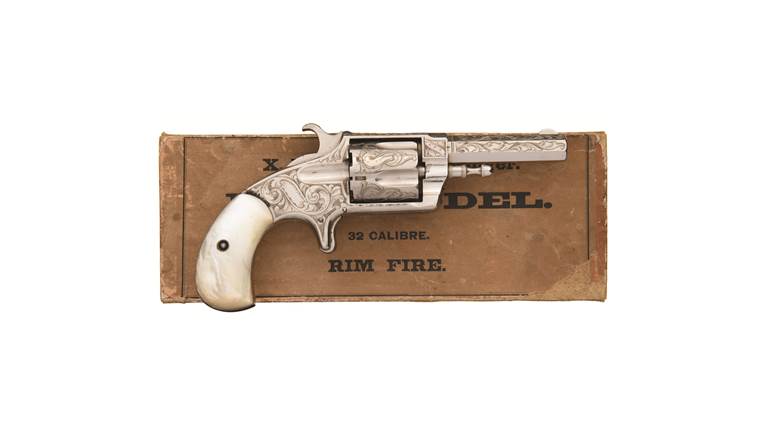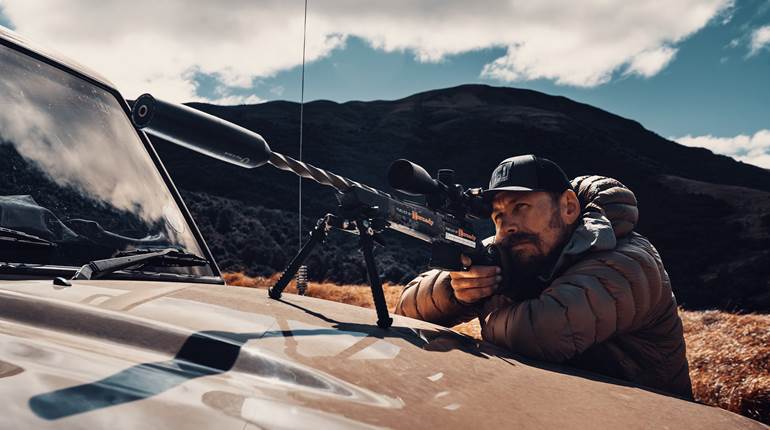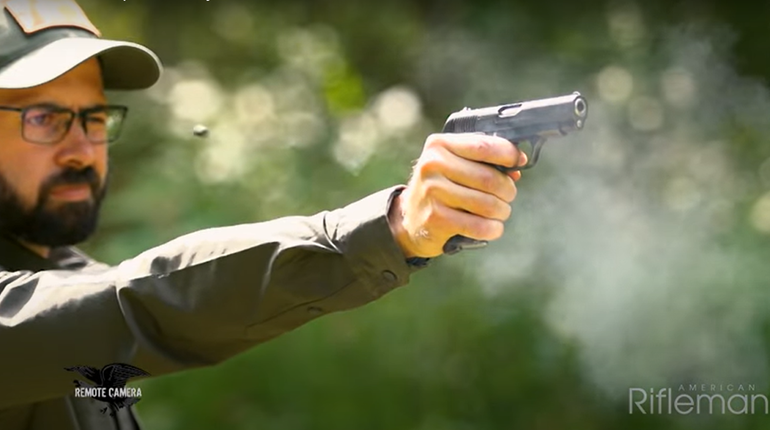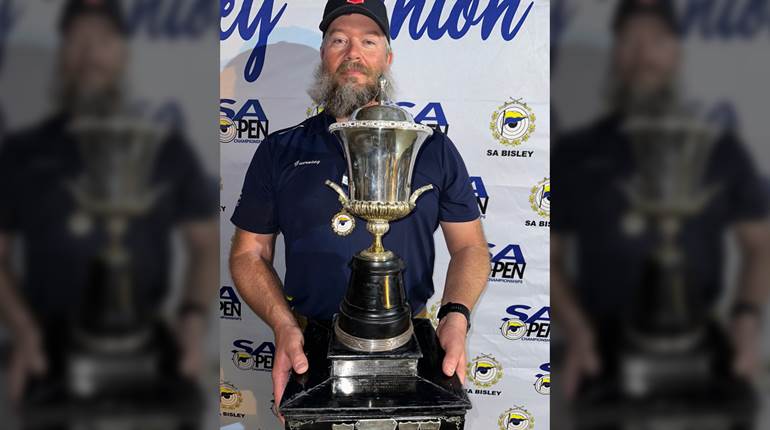
The inception of what we now consider sniping developed more than 100 years ago on the killing grounds of the Dardanelles (Gallipoli campaign) and the trenches of the Western Front. It was the dawning of the commonplace use of telescopically-sighted rifles in combat, though a few had been used to good effect on both sides in the American Civil War 50 years before.
From 1915 onward, British snipers began teaming up with an observer or spotter, a partner that helped to identify targets for him and switched out with the sniper to relieve the strain from being behind a telescopic sight, ready to fire his rifle in an instant at the first sign of enemy movement. Teamwork and precision shooting had come to the forefront once and for all.

At the beginning of World War I, the infantrymen in both the British and German armies were generally well-trained in marksmanship, and had in their ranks, for a variety of reasons, some superb shots. For the British, as a result of being outclassed by the shooting from Boer farmers in South Africa at the turn of the century, subsequent army musketry training required a soldier to fire a minimum of 15 aimed shots per minute.
Also at the beginning of the 20th century, formal shooting matches (for both rifle and revolver) were exceedingly popular and well attended by the British public. Civilians, who were to enlist at the outbreak of war, and the “Territorial” regiments (an equivalent to our National Guard) competed intensely in these matches. It is undoubtedly because of this pre-war interest in competitive shooting that Great Britain produced several world-class shots at that time.

Then there were the hunters, who shot red deer in Scotland and big game in Africa or India. Furthermore there were the gamekeepers from the huge estates of that period. The most renown of these were the Scottish ghillies, who knew how to stalk and kill with great skill.
The Germans too had their sharpshooting equivalents, the keen competitors from their regional Schützen rifle matches, the forest wardens and Jägers (hunters), whose skills could match those of the ghillies. Unfortunately for the Tommy, it was the Germans who initially took the sniping initiative in the trenches, and with great ferocity; something that 15 well-aimed shots per minute couldn’t deal with.

When war was declared in 1914, Germany was the only combatant country with ample stocks of telescopically-sighted rifles, which to a large extent were in civilian hands, but all too soon, they were requisitioned by the army—to supplement their own—and soon put them to deadly use. Throughout the winter of 1914-15, a single British battalion would lose, on the average, 12-18 men per day to sniping, with most victims being shot in the head.
It was reckoned that exposing any part of the body for more than three seconds would result in a shot from a German sniper. Morale began to plummet as soldiers observed their mates succumbing, and fearing that they might be next to receive a gruesome head wound. The British response wasn’t exactly swift, but when it came, it gained momentum rapidly, with formal schools of sniping established by the middle of 1915. The above big game hunters, ghillies, and Bisley competitors formed the early core of Great War British snipers and sniping instructors.

To counter the German sniping threat in the field, the British employed a hodge-podge of rifle sighting devices to improve accuracy, along with other more extreme measures, such as high velocity “Express” African big game guns, using solid projectiles, to punch through the hardened steel loophole plates behind which Hun snipers were hiding. This was probably one of the first primitive uses of armor-piercing rounds.
Initially, conventional telescopic sights were in short supply, and individual officers took it upon themselves to buy scoped sporting rifles or bring their own back for their men when they were home on leave. Early in 1915, the British army began to acquire another type of magnifying sight, using a simple two-lens “Galilean” system.

These sights were referred to at that time, simply, as “optical” sights by the military, using this term in their nomenclature to differentiate them from conventional telescopes. Eventually, three types of Galilean sights were officially adopted—the Neill, Martin and Lattey—and a further two, the Gibbs and BSA, were purchased in some quantity.
The Galilean telescope was invented in the 16th century by the Italian astronomer and scientist Galileo Galilei. It consisted of a large convex objective lens (1”-1.5”) and a much smaller concave ocular lens, without the absolute need for a tube enclosing them. At the time of World War I, Galilean telescopes were often found in low-powered binoculars. In England, Dr. A.A. Common had adapted this sort of optic for sighting rifles.

Subsequently, the renowned Irish shot and bronze medalist in the 1908 Olympics, Maurice Blood, perfected Galilean sights for competition on back-position rifles. So, this type of sight was well-known on the target ranges before World War I, and this bullseye familiarity, for better or for worse, influenced its design for the military when the call to arms came in 1914.
When shooting at a round bullseye, a round aiming point is beneficial, as the eye naturally centers a circle within a circle. However, this wasn’t necessarily the case when shooting accurately at a human head exposed over a parapet, or at an even narrower loophole slit. Three of the five most common Great War Galilean sights, the Martin, Neill, and BSA, employed 4 minute-of-angle (m.o.a.) dots as their aiming points.

This size of dot was marginally useful when shooting point-of-aim at 100 yds., but beyond that distance a head-sized target was progressively covered. Thus, for an accurate shot, the sniper needed to employ clock-face aiming points. To attain any degree of precision the shooter would commonly sight at the 12 o’clock position on the dot, allowing the target to remain visible.
Aiming points aside, Galilean sights had their fair share of idiosyncrasies. Firstly, focus was adjusted by the convex objective lens. The light passing from the target, through the objective converges on the concave ocular, there it is focused into parallel beams, and enters the eye. However, the concave lens is not actually required, and an image can be formed by using a small aperture, analogous to the way a pinhole camera forms an image.

The image formed is a compromise though, and can never be truly sharp. If the focal length of the objective is greater than the sight radius, then the target will be in focus but not the aiming point, however if the focal length is the same as the sight radius, then the aiming point is crisp, and the target will be slightly blurred.
As if this wasn’t bad enough, there are four further drawbacks to Galilean sights. They have a narrow field of view (1-1.25 degrees = 5-7 ft. at 100 yds.). They are dim due to the necessity of using a tiny rear aperture, and they have low magnification of 2-2.5X, though in 1915, this was no different than that of the most common British sniping sight—the Periscopic Prism Co. telescope mounted on Short, Magazine Lee-Enfield (SMLE) rifles also had only a 2X magnification. Also, the sights used in service weren’t enclosed in a tube, so the lenses (especially the large objective) were prone to collect debris and mist. Worse, possibly, was the glare from direct or incident sunlight hitting the unshaded objective lens.

But for several good reasons, their drawbacks weren’t insurmountable. Also, hard evidence is available to show that Galilean sights were used on sniping rifles alongside of those fitted with more conventional telescopic sights at least until 1917. There were, in fact, many perceived advantages to Galilean sights: a low cost of manufacture, thus ease of replacement in case of damage; the ease of mounting them to a rifle without changing the battle sights.
Many of these sights were mounted over the bore, as compared to the off-set mounting of conventional telescopes on all other contemporary British service sniping rifles. Because of the latter, they could be fired through a narrower loophole slit (as most sniping was done in 1915-17), without increasing the width of the slit to accommodate the offset scope. This arrangement gave the sniper a greater margin of safety in his hide.

Firing through a narrow loophole slit also negated the need for a wide field-of-view. Besides, the observer was there identifying targets. Due to their low weight, Galilean sights were thought to be more rigid in their mountings and thus less likely to be affected by recoil than heavier conventional telescopic sights, that were inclined to shoot loose because of their larger mass.
In 1915, the rifle manufacturing firms Alexander Martin and Geo. Gibbs patented their own “optical” sight designs for attachment to SMLE and Charger Loading Lee-Enfield (CLLE) rifles. Later, Gibbs was also to produce a variant for the Pattern 1914 rifle. The “Gibbs” was one of the two Galilean sights used in service not employing a round aiming point. Instead, a useful post and crosswire were painted on its objective lens.

The Neill sight, too, was developed and patented later that same year for the SMLE but, for various reasons, led a schizophrenic existence. It was adopted by the military as the Neill, but its name was later changed to “Barnett” in the official nomenclature. Then again, it was also commonly referred to by target shooters as the “Ulster,” probably because of its Irish origins. Concurrently, the Birmingham Small Arms Co. (BSA) was producing a sight already in use on target ranges utilizing the ubiquitous BSA No. 9 micrometer-adjustable aperture sight. The No. 9 mounted the ocular for the Martin sight as well.
Yet another sight, commonly referred to as the “Lattey,” having been developed by Capt. Lattey of the NRA School of Musketry at Bisley, was rapidly being embraced by the British military for use on the SMLE. Compared with the other Galilean types, it was mounted to the rifle in a slightly different fashion.

On the Neill, Martin, BSA and Gibbs, their ocular lens mount, incorporating windage and elevation adjustments, fitted close to the rear of the receiver, and an aiming point was integrated into the objective lens. On the other hand, the Lattey had its objective lens bracket mounted ahead of the fore-sight, clamped into the left lightening cut of the rifle’s nose cap and used the SMLE’s front sight blade as the aiming point.
Also unique was that its ocular lens attached to the standing leaf of the SMLE’s battle sight, midway up the barrel. This over-bore arrangement worked well, allowing windage and elevation adjustments to be made with the rear sight of the SMLE Mk. III without the requirement for a separate micrometer-adjustable rear sight. The rifle’s fore-sight blade was made much narrower by the concave rear lens. As it turned out, the Lattey sight was the most common, probably because it was the least expensive, arguably the brightest, and the easiest to fit to a service rifle.

The Lattey, Neill, and Martin sights were all probably in service before they were listed in the List of Changes in British War Materiel ( LoC) in mid-1915 (15 May: Martin; 28 Sept.: Lattey & Neill). As such, these sights could be considered as issued items, thus “trench stores.”
The Martin sight might in fact have the longest documented history of use, it’s known to have been employed during the Gallipoli campaign, early in 1915. The Lattey, Neill, and Martin sights had a relatively long service life, and weren’t declared as “obsolete” until 1921 (LoC: 24632). The BSA and the Gibbs, were also purchased by the War Dept., but were the least common, possibly due to their prices, £3 for the B.S.A. and 5 guineas (a guinea is £1/1 shilling) for the Gibbs, as opposed to a mere 7 shillings/6d for a Lattey.
Despite their use into the later years of World War I and the immediate post-war period, Galilean sniper sights lost out to enclosed telescopic sights as the latter became more dependable and durable. The few surviving examples stand as an important marker in the development of sniper systems in the 20th century.
















![Auto[47]](/media/121jogez/auto-47.jpg?anchor=center&mode=crop&width=770&height=430&rnd=134090788010670000&quality=60)




















